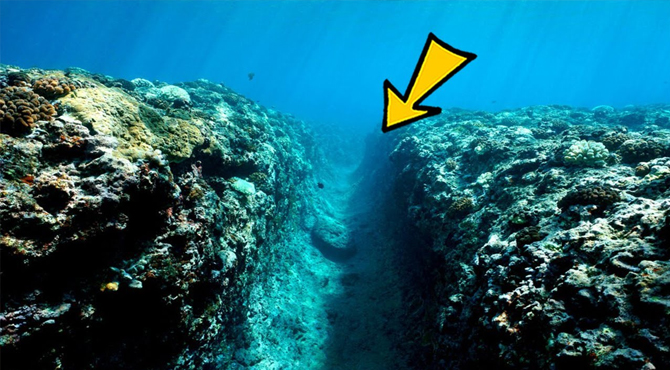In a groundbreaking exploration off the coast of California’s renowned Big Sur, a team of dedicated scientists has stumbled upon a mesmerizing yet perplexing underwater phenomenon — a vast pockmarked field sprawled across the Pacific Ocean floor. This aquatic riddle, wrapped in mystery, has prompted researchers to deploy cutting-edge technology in the form of an autonomous underwater vehicle (AUV), aiming to unravel the secrets hidden within the enigmatic cavities beneath the ocean surface.
The designated area, now acknowledged as the largest pockmark field in North America, has been a source of bewilderment for scientists since its initial discovery in 1999. What distinguishes this underwater landscape is the presence of both large and small holes, creating a captivating yet puzzling seascape. To delve into the heart of this underwater labyrinth, scientists have utilized resources from the Monterey Bay Aquarium Research Institute (MBARI) and the National Oceanic Atmospheric Administration (NOAA), institutions committed to unraveling the mysteries of the deep ocean.
The initial intrigue surrounding the large pockmarks, each approximately 600 feet wide and 16 feet deep, has only deepened over the last decade. Seeking answers and propelled by the potential of offshore wind farming in the region, researchers directed their attention to this underwater enigma. The aim was to explore the seabed’s geological composition and assess its suitability for sustainable energy initiatives.
In 2018, armed with determination and a specialized AUV, researchers set out to explore the depths of this mesmerizing field. Little did they anticipate that the underwater robot would reveal not only the secrets of the larger cavities but also bring to light an unexpected discovery — an array of smaller holes, now referred to as “micro depressions.”
These micro depressions, with an average width of 35 feet and a depth of about three feet, were found to be unique and distinct from their larger counterparts. What captured the scientists’ attention was the revelation that these smaller indentations were not merely geological features but, rather astonishingly, repositories of human-made debris. The cavities housed a medley of materials, ranging from seaweed and rocks to the remnants of deceased marine life and, most significantly, discarded garbage.
The discovery of these trash-filled micro depressions raises critical questions about the impact of human activities on the ocean floor. As researchers grapple with the intricate relationship between human waste and the underwater landscape, estimates suggest that around 15,000 of these smaller holes dot the region. The sheer frequency of these micro depressions, coupled with their eclectic contents, invites a more profound exploration of the ecological consequences and potential long-term effects.
The study, conducted collaboratively by MBARI and NOAA, serves as a testament to the evolving understanding of the ocean’s intricate ecosystems and the interconnectedness of human activities with marine environments. The implications of these findings extend beyond the scientific realm, prompting reflections on the broader scope of humanity’s influence on the Earth.
As scientists continue to navigate the depths of this underwater labyrinth, questions emerge about the broader implications for our planet. Could these formations be indicators of a new geological epoch — the Anthropocene — characterized by humanity’s profound influence on Earth’s geology and ecosystems? If the micro depressions persist and serve as lasting imprints of human impact, they may become harbingers of significant environmental change and a sobering testament to the Anthropocene’s footprint on the world’s oceans.
The journey into the heart of the Pacific Ocean’s mysteries continues, as scientists, armed with technology and determination, strive to unveil the secrets hidden beneath the waves and gain insights into the delicate dance between the human species and the vast, complex ecosystems that lie beneath the surface.










